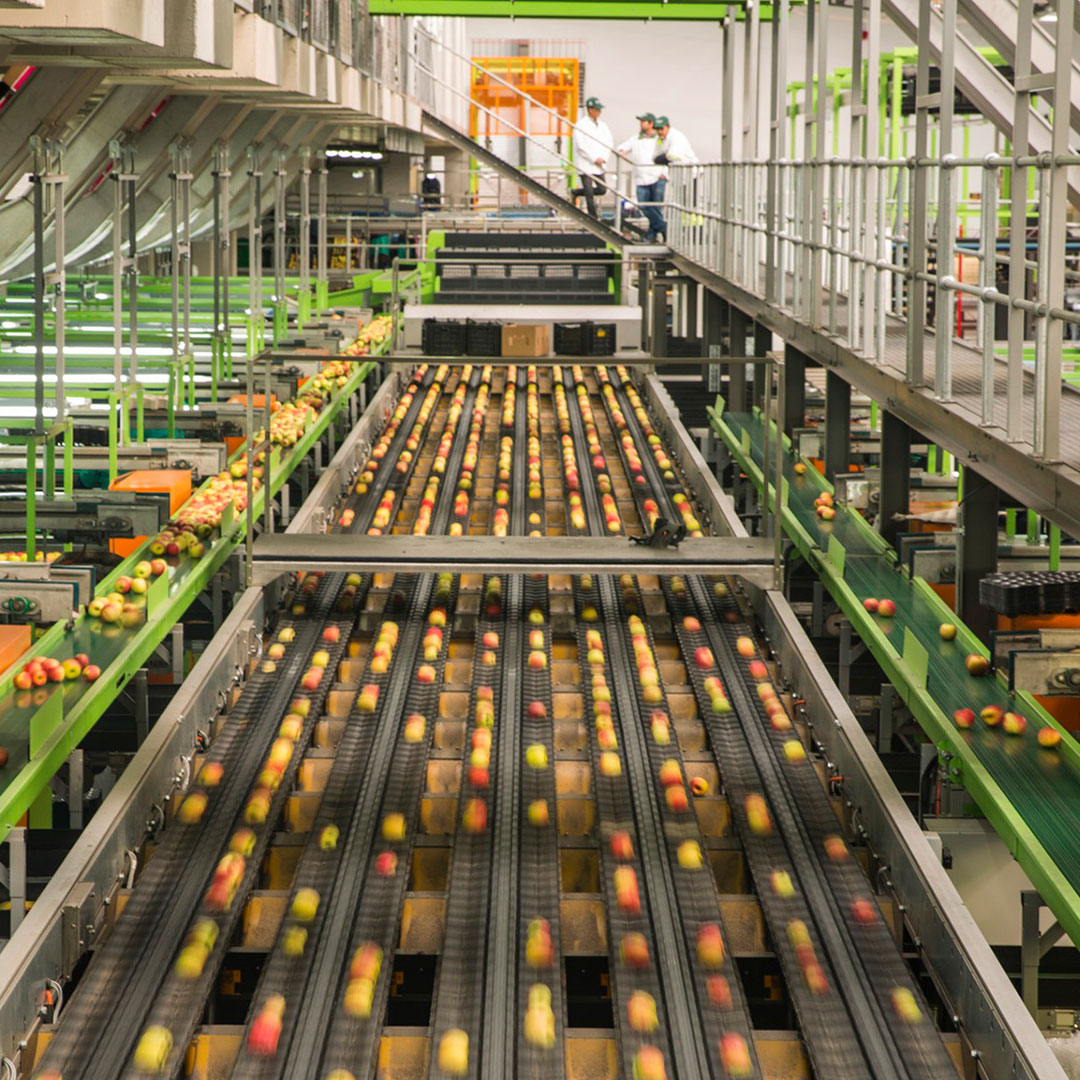A revolutionary approach to manufacturing in a moment of changes
This boom in choice has been driven by technology and innovation, which has touched almost every part of the food manufacturing industry over the last 20 years. The trend is on course to continue – with the food industry likely to change more in the next 10 years than it has in the last 50. While the good news stacks up for us as consumers, behind the scenes in the manufacturing industry, the battle for the food marketplace is fierce.
Multinational food manufacturers in particular must innovate on multiple fronts. A great new product without the agility and speed to put it on the shelves and in the hands of consumers when they want it is an imbalance – an imbalance that one multinational food manufacturer set out to correct, with the help of specialist expertise.
A new approach - is it possible?
For decades, the multinational manufacturer at the heart of this story had been motivated largely by efficiency – how can they keep costs down and create big factories with large production runs. This same thinking has driven most of its peers for a long time – and for a long time it was an approach that made sense.
But that was then, this is now, and the future calls for something different. The head office at the company looked at global operations and saw this change unfolding – in local markets they were facing competition from smaller companies whose size gave them an agility to take products to market at greater speed. Elsewhere, shifting consumer demands and greater choice made large production runs increasingly difficult to justify.
Seeing the need to act, they sent the call out to experts not just in the engineering sector, but business and financial sectors too. The challenge was simple: We want a factory concept that meets the needs of this moment of change. Is it possible, and can you do it?
Amongst the responses they received, one hit the balance of engineering expertise, business and financial knowledge – as well as consultancy and project management experience. In appointing Royal HaskoningDHV, the manufacturers began a process that would question the way they had done things for decades – and push the boundaries to reach new heights.

Forget the straight line, let's take the diamond road
Patrick Ramakers is the Business Development and Associate Director of Global Manufacturing & Supply Chain Projects at Royal HaskoningDHV – it is a title worthy of the breadth of work he has undertaken in his decades of experience in the manufacturing sector. He led the team that created the winning proposal selected by the multinational manufacturer: “We had done some work for them previously…” Patrick says over video call from his home where he, like millions of others, has worked in the year post-COVID-19, “and in their call for ideas, they had noted some work we had done on modular production plant design in South Africa, as well as our work with an international brewery – so that existing relationship gave us the confidence to take a bold approach to this disruptive factory concept.”
The proposal by Patrick and his team did not point towards, or promise, a perfect solution, but instead laid out an approach that might help them get there in a way that meets the needs of teams in local markets around the world, as well as the strategic aims of the company. They called it ‘design thinking’ informed by a double diamond approach. It would be a new process for the manufacturer – asking them to step back and ask broader questions about what was driving the need for the concept: I'm an engineer, and we're taught to solve problems, it's our job.More often than not the approach to solving a problem is how to get from A to B in a straight line – because a straight line is more efficient, more direct, and surely that’s a good thing? But our world is less rigid than that today and technology is only increasing that fact,” Patrick explains.
One of the benefits of working at a consultancy like Royal HaskoningDHV is the multi-discipline approach to projects. One that allows for collaboration and the ability for teams to combine different elements of expertise to produce the best approach to any given project. In Patrick’s team there were not just engineers, but economists, data analysts and engineers from other sectors.
The question behind the question
As the design thinking process began, Royal HaskoningDHV used research and market analytics they had conducted to inform conversations with the manufacturer’s teams around the world. In the early stages, the complexity of the road ahead was clear: “It was difficult,” Patrick continues. “Each market had a completely different plan for growth and development, a different culture, a different idea. In one Western country, for example, they had plans for only a couple of additional factories in the next decade. Whereas another market in the East was huge and expanding; there they were facing pressures from local competition, changing consumer demands, and the need to move quickly.”
At the centre of everything was Patrick and his team: “At one point we weren’t 100% sure we could find the route to this disruptive concept – but we knew that if it were possible, the process would get us there.” For the manufacturer’s teams who have taken a set approach to production plant design for decades, the ability to see another way was difficult – especially given how unique the demands were from each market.
It was through this exploratory process that the project team came to understand the question behind the question. This wasn’t just about creating any disruptive factory – after all disruptive can be interpreted in many ways; the real question that Patrick and his colleagues uncovered was: Can we create a factory concept that is adaptable to the needs of individual markets, while maintaining the ability to operate on a global scale? It was at this point that the team at Royal HaskoningDHV turned not only to their own experience – but to other industries.
Learning from others to forge a new path
In investigating how similar industries – such as automotive and tech – were tackling issues of agility and speed of production, the manufacturer would find both glimpses of new approaches, as well as warnings of what can happen when you don’t take the hard steps towards innovation.
"We looked at what was happening in these industries that we could carry to food – and one of the examples we found was in electronics. When they make microchips, they need a completely dust-free environment – not too dissimilar from the hygienic standards needed in food production; but making a whole factory dust-free is a hugely expensive undertaking. What they realised was that they only needed the dust-free environment in one part of the factory, so they built it and saved themselves the cost of having to build the whole factory in the same fashion."
The concept was modular and might just be the answer to creating a framework that provides unity and strategic clarity on a global scale, while providing the locality needed to be effective in different regions. By taking the modular approach, the manufacturer’s teams around the world could take a broad concept and utilise modular elements to build plants tailored to the needs of their markets and products.

Overcoming uncertainty
The revelation of the modular approach took the project team towards the second half of their double diamond. They had worked to understand the problem and need for the concept, and now they had defined an approach that could take them to a solution.
But there was apprehension as to whether a modular concept could work. The adaptability and flexibility are great – but in reality, it’s expensive, and cost will always be a defining factor. Plus, there are the standardised ways of doing things to contend with.
“Standards are crucial,” Patrick says, discussing those uncertain days in the project. “But there must always be a willingness to review them – especially in the face of wholesale change in the industry – and see if we can do better. It is certainly true that a bigger plant, created at scale in an emerging market is cheaper than a smaller, bespoke, modular plant.”

But if it takes two or three years to build the big plant and you miss the market – then was the cost saving worth it? This was again where redefining the question helped us see the way forward.
Ready for the road ahead
The result of the research and collaboration with the manufacturer’s teams around the world is a set of ‘solution directions’ to be explored. The hygiene approach found in the electronic industry is one of them. The next steps were to explore these directions, with a view to creating a scalable concept that can move to a pilot stage.
In a post-Covid-19 world, it’s clear that ignoring a local approach is not feasible. The modular concept being forged by the project team, through a process of collaboration and approaching the problem from a new perspective, could provide a future for production plant design that localises global food production; perfectly suited not just to the needs of the teams who run them, but to us as consumers whose desire for greater control and locality in our food choices is only growing.
